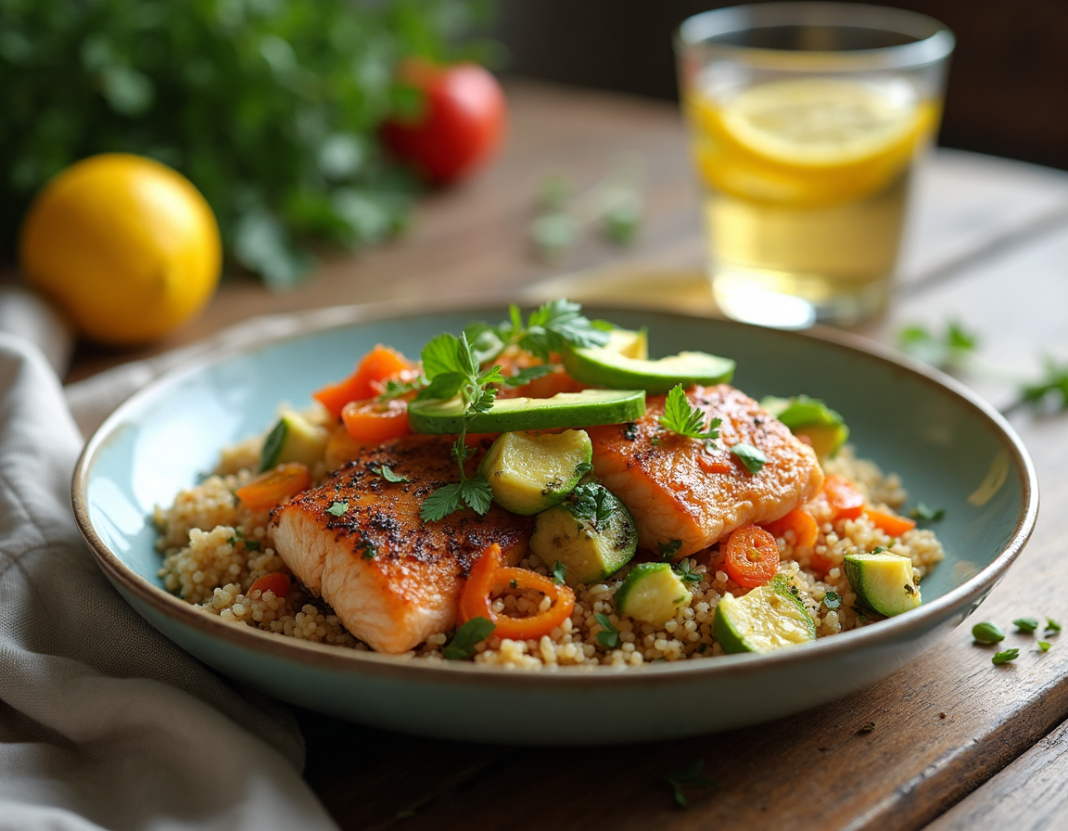If you’ve ever started a diet that asked you to cut out all sugar, avoid bread, or give up your favorite comfort foods entirely, you’re not alone. Many of us have been led to believe that “healthy” and “enjoyable” are mutually exclusive when it comes to food. The truth? A sustainable diet doesn’t demand perfection. It thrives on balance, flexibility, and a little bit of joy on your plate.
As a certified nutritionist, I’ve worked with people from all walks of life—and I can confidently say that long-term success comes from nourishment, not punishment. In this article, we’ll break down how to build a realistic, feel-good diet plan that helps you thrive without forcing you to give up what you love.
01. Sustainability Starts with Mindset, Not Restriction
The word “diet” often carries a heavy emotional load—rigid rules, temporary changes, and inevitable burnout. But when we shift from a deprivation mindset to a sustainability mindset, everything changes.
A sustainable diet is one that you can stick with—not just for weeks, but for life. It doesn’t mean eating “perfectly” every day. It means consistently making choices that support your health while allowing space for the foods that nourish your soul.
🧠 Research Insight: According to a 2020 study published in The American Journal of Clinical Nutrition, diets that allow flexibility and personal food preferences are more likely to lead to long-term adherence and weight maintenance than restrictive plans.
02. The 80/20 Approach: Balance, Not Elimination
One of the most practical tools I recommend is the 80/20 rule—eat nourishing, whole foods 80% of the time, and allow yourself flexibility for the other 20%. That might mean having a glass of wine on date night, a slice of birthday cake, or Friday-night takeout.
This approach fosters a healthy relationship with food, helps curb cravings, and—most importantly—makes eating enjoyable again.
🍕 Real-Life Tip: Love pizza? Try making a homemade version with a whole grain crust, plenty of veggies, and lean protein. Or enjoy the real deal mindfully, pairing it with a side salad and stopping when you’re comfortably full, not stuffed.
3. Build Your Meals with the “Balanced Plate” Formula
Instead of obsessing over calories or cutting out food groups, focus on building balanced meals that give your body what it needs. Here’s a simple formula:
- 🥬 Half the plate: Non-starchy vegetables (think spinach, broccoli, peppers)
- 🍚 A quarter: Whole grains or starchy carbs (quinoa, brown rice, sweet potatoes)
- 🍗 A quarter: Lean protein (chicken, tofu, legumes, fish)
- 🥑 Add healthy fat: Olive oil, nuts, seeds, avocado
This kind of meal satisfies hunger, supports energy levels, and helps regulate blood sugar—all while keeping room for flavor and variety.
✅ Bonus: Including enough protein and fiber helps reduce cravings later in the day, making it easier to avoid mindless snacking.
04. Debunking Common Diet Myths That Derail Progress
Let’s clear the air on a few myths that often push people into unsustainable habits:
- ❌ Myth: Carbs are bad.
✅ Truth: Carbs are your brain’s primary fuel source. The key is choosing quality carbs like whole grains, fruits, and legumes. - ❌ Myth: You need to detox with juice cleanses.
✅ Truth: Your liver and kidneys already detox your body naturally. Extreme cleanses often do more harm than good. - ❌ Myth: Eating late at night causes weight gain.
✅ Truth: It’s more about what and how much you eat overall—not when you eat it. Late-night bingeing is often a sign of under-eating during the day.
A sustainable plan is built on truth, not trendiness.
05. Embrace Food Freedom Without Losing Structure
Food freedom doesn’t mean a free-for-all. It means making empowered, intentional choices that support your goals while respecting your body’s cues.
Here are a few gentle boundaries that offer structure without rigidity:
- 🍽 Practice mindful eating – slow down, chew well, and listen to hunger and fullness.
- 🕒 Create a consistent meal rhythm – avoid skipping meals that lead to overeating later.
- 🧃 Stay hydrated – thirst is often mistaken for hunger.
Remember: freedom isn’t the absence of structure. It’s having enough structure to feel confident and at ease in your choices.
Eat Well, Live Fully
Creating a sustainable diet plan isn’t about willpower or weight—it’s about building habits that nourish your body and your life. You can absolutely enjoy chocolate, pizza, or a glass of wine and still be healthy. The key is finding your rhythm, listening to your body, and embracing balance over perfection.
🍴 Actionable Takeaways:
- Aim for the 80/20 approach: Mostly whole, nutritious foods with room for flexibility.
- Use the balanced plate method for satisfying, energizing meals.
- Don’t fall for food myths—learn what works for you.
- Focus on building habits, not chasing quick fixes.
You don’t need a strict plan to eat well—you need one that fits your life. And that includes your favorite foods.



